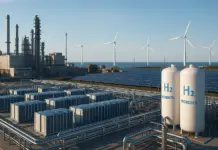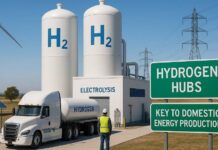Researchers at Tohoku University have built an interpretable artificial intelligence (AI) model that pinpoints the atomic traits linked to efficient hydrogen storage in metal hydrides, the university said. Their work focuses on understanding how the basic characteristics of individual elements shape the way metal-hydride materials absorb and release hydrogen and how those traits influence the performance of hydrogen storage materials. To carry the study out, the team assembled more than 5,000 curated experimental records and integrated them into a data platform known as the Digital Hydrogen Platform (DigHyd). The platform allowed researchers to examine atomic-scale descriptors in a systematic way, concentrating on properties such as atomic mass, electronegativity, molar density, and ionic filling factor as core indicators of storage performance. The team assessed these traits as key indicators of how metal hydrides perform during hydrogen uptake and release, adding insight into the broader behavior of hydrogen storage materials.
Hao Li, Distinguished Professor of the World Premier International Advanced Institute for Materials Research (WPI-AIMR) at Tohoku University, underscored the significance of interpretability in the study. “Not only does this white-box regression model make accurate predictions, but it maintains full physical interpretability,” he said. Unlike conventional “black-box” machine-learning systems, which often hide how they reach their conclusions, the team’s interpretable approach lets material scientists see why certain elements or combinations perform better. It presents researchers with a clearer view of the chemically grounded links between atomic properties and hydrogen-storage behavior, rather than leaving them to rely on opaque algorithmic results.
The findings also highlight a structural trade-off that influences the design of today’s metal-hydride systems. Materials built from light, electropositive elements offer high hydrogen capacity, but their equilibrium pressure at room temperature is low, which limits how they can be used. Compounds made with heavier transition metals release hydrogen more easily, but they give up capacity in the process. In the study, beryllium-based alloys emerged as a potential middle ground, showing a better balance between these competing traits than many of the other systems reviewed.
While the work focuses on metal hydrides, the team says the same approach could be applied more widely across hydrogen materials research. Moving away from trial-and-error experimentation toward descriptive modeling could accelerate the development of safer, more efficient, and higher-capacity hydrogen storage materials. Tohoku University has also advanced hydrogen materials research in related work, including a study using a cobalt–molybdenum catalyst to boost green hydrogen production.































